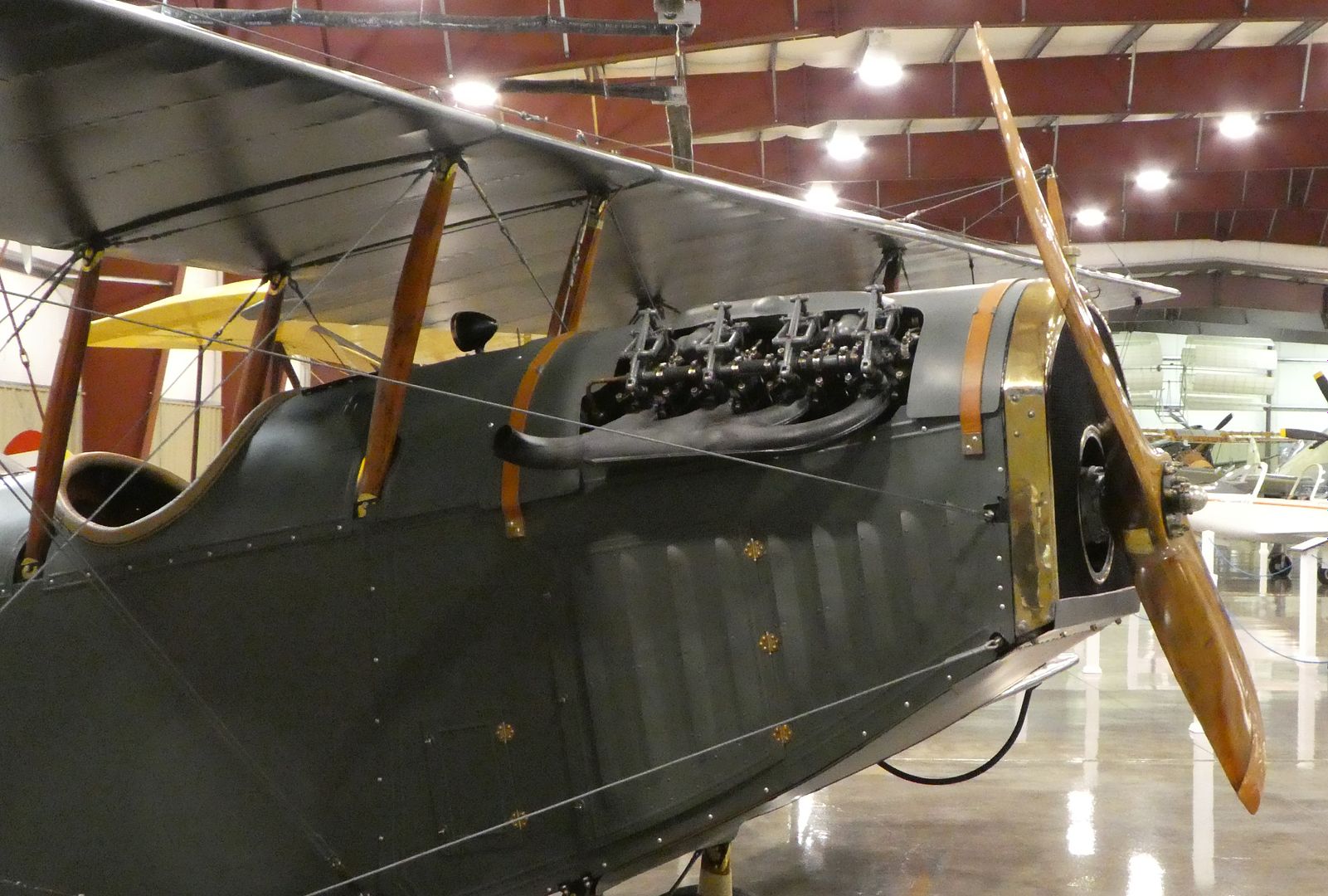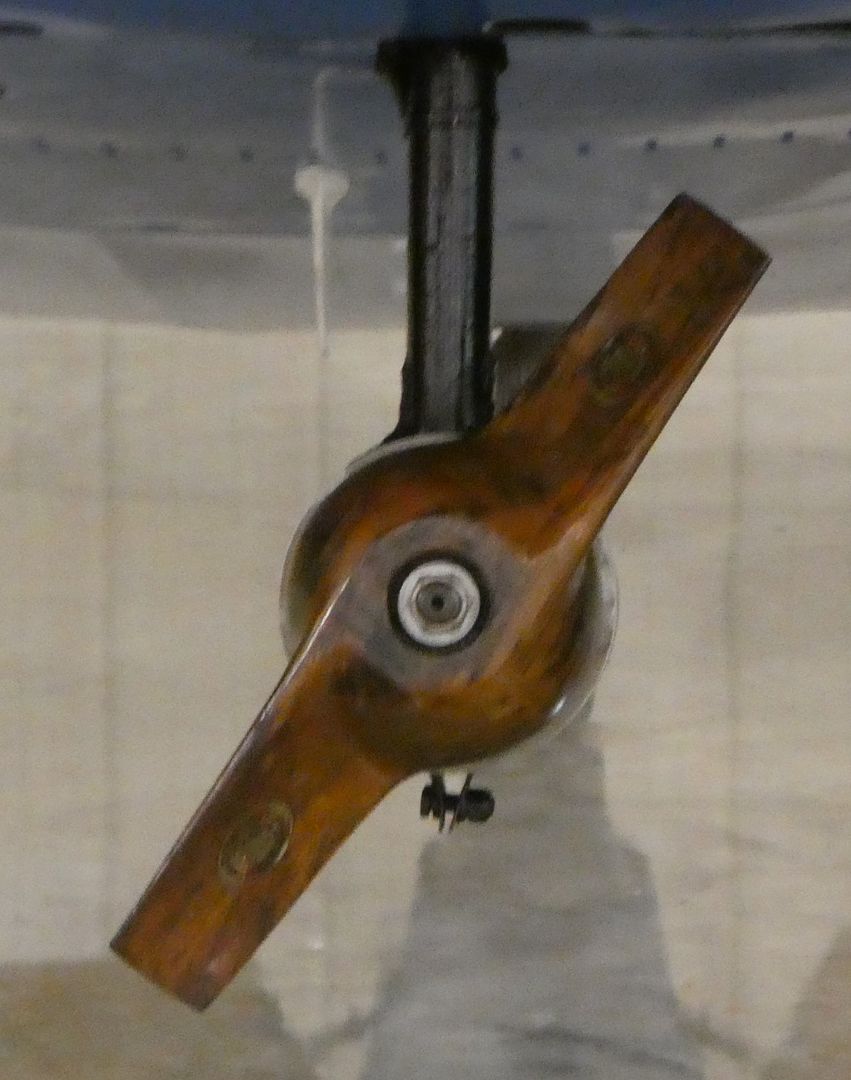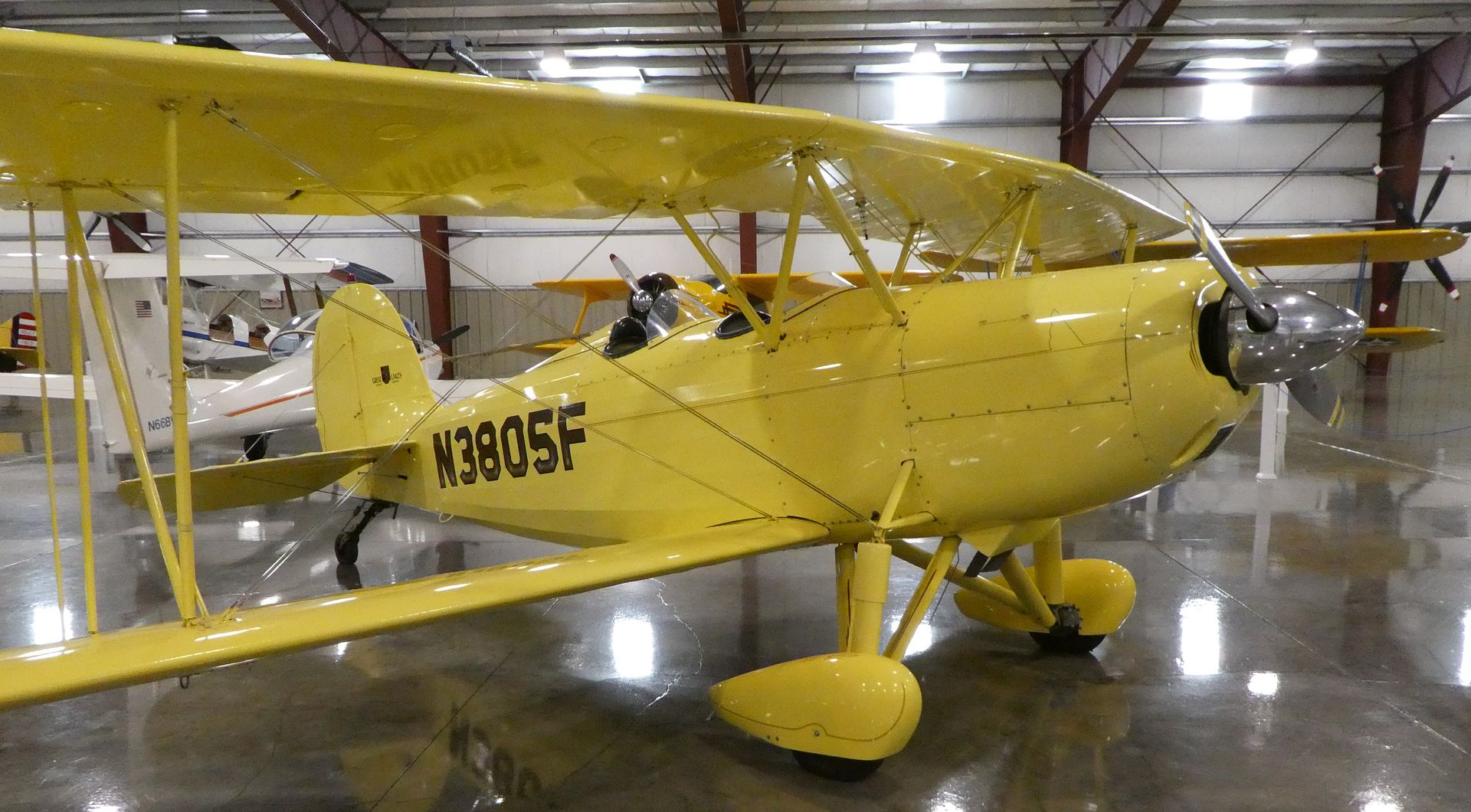The Stonehenge Air Museum is located in a residential area near the golf course in Fortine, Montana. This small museum contains about two dozen vintage aircraft, including some one-of-a-kind planes. Shown below are some of the biplanes which are on display in the museum.
1917 Curtiss JN-4D Jenny
According to the display:
“More than ninety percent of all pilots trained in North America during the First World War received their primary instruction on the Jenny. The Jenny was designed as a trainer and not a fighter which precluded it from combat in Europe.”
The display also indicates:
“During the postwar period, the Jenny became the principal aircraft flown by barnstormers across the country. Americans, particularly in rural areas, thrilled to the antics of these pilots performing in the aerial circuses that toured the country during the 1920s. For many, the Jenny would be the first airplane that they would see close-up, and those with a few dollars in hand (and their fear in check) typically would make their first flight in a Jenny.”




1930 Lincoln Page PT-W
In 1919, the Nebraska Aircraft Corporation was founded to refurbish military surplus Standard J-1 aircraft for civilian use as the Lincoln Standard Tourabout. In 1922, the company became the Lincoln Aircraft Company. In 1922, Charles Lindbergh, who had just turned 20, enrolled in the Lincoln Aircraft Corporation’s flying school.






1931 Curtiss-Wright 12W Travel Air
The Travel Air Manufacturing Company was established in Wichita, Kansas, in 1925 by Clyde Cessna, Walter Beech, and Lloyd Stearman. In 1929, Travel Air was purchased by Curtiss-Wright Corporation.



1942 DeHavilland DH-82A Tiger Moth II
Over 7,000 Tiger Moth trainers were built for the British Commonwealth Air Training Plan during World War II. Thousands of military pilots got their initial training on this aircraft. According to the display:
“From the outset, the Tiger Moth proved to be an idea trainer, simple and cheap to own and maintain although control movements required a positive and sure hand as there was a slow response to control inputs. Some instructors preferred these flight characteristics because of their effect of ‘weeding out’ the less-skilled pilot.”




1943 Beechcraft D178 Traveler “Staggerwing”
The Beech Aircraft Company was formed in 1932 by Walter Beech who wanted to design a luxury executive aircraft. According to the display:
“The project was considered foolhardy by many, building a large, powerful, fast biplane built specifically for business travel at a time (during the Great Depression) when businesses were going out of business. It was the first designed-for-the-purpose corporate transport.”
The staggerwing design—the top wing is staggered behind the bottom wing—maximizes the pilot’s visibility and minimizing the tendency to stall.
According to the design:
“Each Staggerwing was custom built. A luxurious cabin trimmed in leather and mohair, carrying up to five passengers in comfort, quickly won over the customers. With a 450 h.p. engine, the Model D17s had a remarkable cruise speed of 202 m.p.h.”



1942 Boeing/Stearman D75N1 Kaydet
According to the display:
“Built in greater numbers than any other American biplane and consequently one of the world’s most easily recognizable aircraft, the Stearman’s simple construction, rugged dependability and nimble handling made it the darling of those who mastered it.”
While originally intended for the civilian market, the Army and Navy ordered them for flight training. The aircraft on display was originally ordered for the Royal Canadian Air Force. It was, however, delivered without the special canopy and cockpit heater needed for Canadian winter use. Consequently it was traded to the U.S. for a Fairchild PT-26.




1977 Great Lakes 2T-1A-2
The Great Lakes Aircraft Corporation first produced the 2T sport trainer in 1929. About 250 of these airplanes were produced before the Great Depression killed the aircraft company. In 1972, the rights to the biplane design was purchased by Doug Champlin who created a new Great Lakes Aircraft Company to produce an updated version of the airplane. Over the next decade, the new corporation produced 143 airframes.



More airplane photo tours
Museums 101: 1930s Biplanes (Photo Diary)
Yanks Air Museum: Biplanes (Photo Diary)
WAAAM: 1929 Airplanes (Photo Diary)
WAAAM: Fairchild Airplanes (Photo Diary)
Museums 101: Experimental Aircraft (Photo Diary)
Museums 101: World War I Airplanes (Photo Diary)
Museums 101: Vintage Aircraft in the Museum of Mountain Flying (Photo Diary)
Museums 101: The Olympic Flight Museum (Photo Diary)


